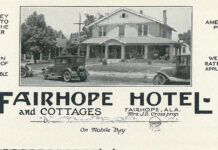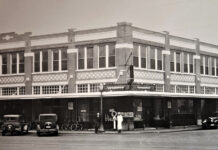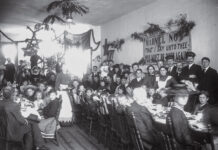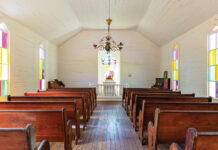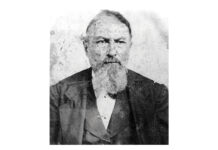Tuthill Lane earned its name from the family of George Augustus Tuthill. In January of 1849, he paid $500 for a standard 5-acre lot on the northwest corner of Old Shell Road and what is now Tuthill Lane, where he built a handsome raised cottage for his family.
Spring Hill had long been considered a healthy location due to its lofty altitude. Its residents were not subject to the yellow fever quarantines imposed on low-lying Mobilians during various epidemics.
As early as 1839, a horse-drawn omnibus line connected the area to downtown Mobile. In 1860, the Spring Hill Railroad was established. A team of oxen or mules occasionally assisted small steam locomotives in climbing the steep grade.
George and his wife, Phebe, were both natives of New York, but by 1860 they were settled in Spring Hill, with seven children and an Irish seamstress. Mobile directories at the time listed George’s office as 30 St. Francis St., and his residence simply as “country.”
Twenty years and a Civil War later, the 1880 census revealed that the household had reduced down to the elder Tuthills; their widowed daughter, Anna Mordecai; her two daughters; a cook; and a young house servant. George died three years later and was buried in Magnolia Cemetery.
Up in Flames
One cold January night in 1897, tragedy struck the household. Sparks from a second-floor fireplace ignited a blaze, which spread rapidly. Phebe, who was in poor health, had to be removed in her wheelchair. Students from Spring Hill College raced to the home to man a bucket brigade and assist neighbors in trying to salvage furnishings.
A group of men attempted to save Phebe’s dining room breakfront, its shelves laden with her prized French china. But the porch steps were slick, and the men, the cabinet and its contents landed with a deafening crash as the fire raged on above them. The house was reduced to ashes, and Phebe moved into her former servants’ quarters. She died there two years later at the age of 80.
After the first World War, lumberman T. Shannon Hunter purchased the five acres, replete with antebellum azaleas, camellias and towering oaks. His wife, Caroline, had lived in the neighborhood as a child and witnessed the 1897 fire.
The Hunters hired local architect George B. Rogers to design their handsome Georgian house, which was built on the site of the Tuthill home. He took great care to save the original landscape and setting. The Hunters’ descendants still occupy the location today.
Most of the Tuthill residence’s contemporaries have not withstood the march of time. Spring Hill College’s Stewartfield, which dates to 1850, and the 1853 Marshall-Hixon House, at 152 Tuthill Lane, are two surviving examples.

